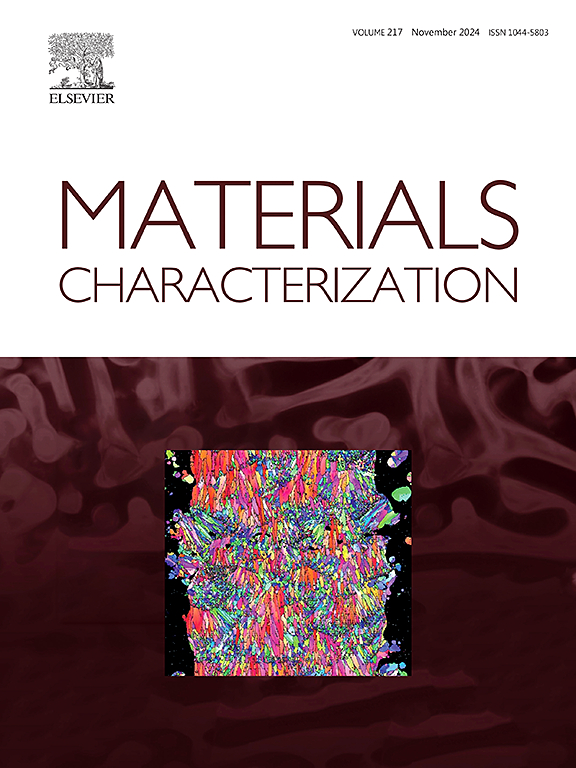Formation mechanism of cross-boundary twin pairs during compression in an α-Zr alloy
IF 4.8
2区 材料科学
Q1 MATERIALS SCIENCE, CHARACTERIZATION & TESTING
引用次数: 0
Abstract
The formation mechanisms of {10−12} cross-boundary twin pairs (CBTPs) and the selection criteria of twin variants were systematically investigated in the present research. Ex-situ and quasi-in-situ compression tests along the rolling direction (RD) were conducted on Zr-4 alloy. The deformation mechanisms were analyzed by using the Schmid factor (SF) m and the geometric compatibility factor (GCF) m’. The results demonstrate that CBTPs are formed by both twin-assisted nucleation (TAN) and twin-independent nucleation (TIN) modes. The TAN mode includes twin transmission (TT) and synergistic nucleation (SN), while the TIN mode includes face-to-face growth, homodromous growth, and reverse growth. All TIN-CBTPs and most TAN-CBTPs select variants with high m ranks, but TAN-CBTPs also require high ranks of m’ values to ensure compatibility between twins. However, certain TAN-CBTPs with the a-axis of the parent grain parallel to the RD exhibit twin variants with high m’ ranks and low m ranks. Furthermore, an interesting phenomenon was observed: for grains that meet the conditions for TAN-CBTPs, the complex stress state generated at the common grain boundary (GB) by twins from two different parent grains fails to assist in the twinning of a third grain.
求助全文
约1分钟内获得全文
求助全文
来源期刊

Materials Characterization
工程技术-材料科学:表征与测试
CiteScore
7.60
自引率
8.50%
发文量
746
审稿时长
36 days
期刊介绍:
Materials Characterization features original articles and state-of-the-art reviews on theoretical and practical aspects of the structure and behaviour of materials.
The Journal focuses on all characterization techniques, including all forms of microscopy (light, electron, acoustic, etc.,) and analysis (especially microanalysis and surface analytical techniques). Developments in both this wide range of techniques and their application to the quantification of the microstructure of materials are essential facets of the Journal.
The Journal provides the Materials Scientist/Engineer with up-to-date information on many types of materials with an underlying theme of explaining the behavior of materials using novel approaches. Materials covered by the journal include:
Metals & Alloys
Ceramics
Nanomaterials
Biomedical materials
Optical materials
Composites
Natural Materials.
 求助内容:
求助内容: 应助结果提醒方式:
应助结果提醒方式:


